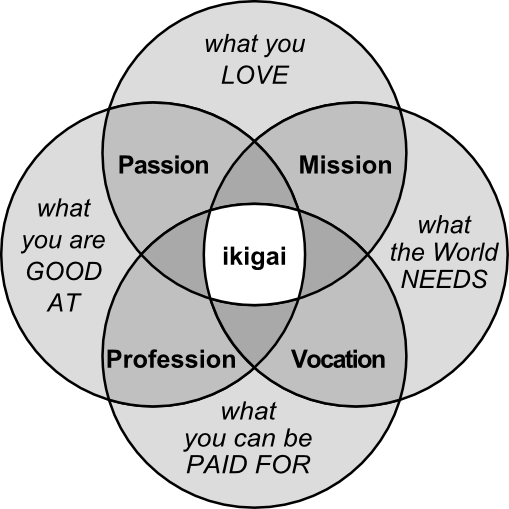Data has become an integral part of our daily lives, with every click, swipe, and purchase generating valuable information that businesses can use to their advantage. However, not all businesses understand how to effectively use this data, and many struggle to find a purpose for it. In this post, we will discuss why finding a purpose for your data is important and provide practical tips for businesses on how to do it.
Why Finding a Purpose for Your Data Matters:
As the philosopher Aristotle once said,
“Knowing yourself is the beginning of all wisdom.”
This statement applies to businesses as well. In order to succeed, businesses must first understand themselves, their customers, and their market. This requires analyzing data to gain insights and make informed decisions.
Think of your data like a GPS for your business. Just like how a GPS helps you reach your destination, your data can guide you towards your business goals. Aristotle called this concept ‘Telos’ – finding the purpose or end goal of something. By analyzing your data and finding its purpose, you can make decisions that lead to business growth and success.”
Data can help businesses make better decisions, improve operations, and identify new opportunities for growth. For example, Amazon has used data to improve its customer experience, from personalized recommendations to streamlined checkout processes, which has contributed to its success as one of the largest e-commerce companies in the world. By finding a purpose for your data, you can gain a competitive advantage, better understand your customers, and make informed decisions that lead to business growth.
In his book “Nicomachean Ethics,” Aristotle argues that self-knowledge is essential to living a virtuous life. He believed that individuals must know themselves in order to understand their own desires and motivations, and to make choices that align with their true values. Similarly, businesses must know themselves in order to succeed.
By looking into their existing data, businesses can gain understand their customers’ behaviors, preferences, and needs thereby knowing own strengths and weaknesses. You can make decisions that align with their objectives. For example, a company that values customer satisfaction can use data to identify areas for improvement in their customer service processes, leading to happier customers and increased loyalty.
Types of Purpose Your Data Can Serve:
There are various types of purposes that data can serve. Here are some examples:
- Accelerating decision-making: Businesses can analyze data in real-time and make informed decisions based on facts and figures, rather than relying on guesswork or intuition. This can lead to faster and more accurate decision-making, which is especially important in industries where timing is critical, such as finance or e-commerce.
- Diagnosing problems: By analyzing data, businesses can identify areas for improvement and develop effective solutions. For instance, healthcare providers can use patient data to identify patterns in disease prevalence, leading to more effective treatment options. Similarly, manufacturing companies can use data to identify bottlenecks in their production processes, leading to increased efficiency and cost savings.
- Complementing intuition and decision-making: By using data alongside intuition, businesses can make more informed decisions that are based on facts and figures. Financial firms can use analytics to identify market trends and patterns, and investment managers can use this information to make better investment decisions. By combining data with human intuition, businesses can achieve better outcomes than either approach alone.
- Supporting research findings and validating hypotheses: Scientific researchers can analyze experimental data to confirm or refute hypotheses, leading to more accurate and reliable results. This can lead to new discoveries and advancements in fields such as medicine, engineering, and social sciences.
- Exploring new avenues of opportunity: By using social media analytics, businesses can identify emerging trends and new market segments, leading to new marketing opportunities and increased revenue. By finding new opportunities to expand their business, companies can stay ahead of the competition and drive growth.
But how do you go about finding a purpose for your data? Here are some practical tips:
Finding a purpose for your data can be a daunting task, but using the IKIGAI framework can help you streamline the process. IKIGAI, a Japanese concept meaning “a reason for being,” is a powerful tool that can help you find the purpose behind your data.

Similarly, in the context of data, we can use this framework to identify the purpose of data.
- What you love:
What are the areas of your business that you are most passionate about and want to see grow? What data can you collect that will help you make informed decisions about these areas?
This refers to the areas of your business that you are most passionate about and want to see grow. By identifying what you love, you can determine which data is most valuable to you and prioritize the collection and analysis of that data. For example, a social media company might be passionate about creating a positive user experience. They can collect data on user behavior, engagement, and satisfaction to inform decisions that improve the user experience.
- What you are good at:
What are the strengths of your organization? What data do you have readily available and what data do you need to collect to enhance these strengths?
This refers to the strengths of your organization. By identifying your strengths, you can determine which data you have readily available and which data you need to collect to enhance these strengths. For example, an e-commerce company might be good at predicting customer behavior. They can collect data on customer browsing and purchase history to inform recommendations and marketing efforts.
- What the world needs:
What are the challenges or pain points of your customers or stakeholders? What data can you collect to help address these challenges and provide better solutions?This refers to the challenges or pain points of your customers or stakeholders. By identifying what the world needs, you can determine which data can help address these challenges and provide better solutions. For example, a healthcare company might identify a need to improve patient outcomes. They can collect data on patient health, treatments, and outcomes to inform decisions that improve patient care.
- What you can be paid for:
How can you use data to create new revenue streams or optimize existing ones? What insights can you gather from data to make more informed business decisions that will ultimately increase revenue?This refers to how you can use data to create new revenue streams or optimize existing ones. By identifying how you can be paid for your data, you can determine which insights you need to gather from data to make more informed business decisions that will ultimately increase revenue. For example, a fintech company might identify opportunities to optimize loan approval rates. They can collect data on borrower creditworthiness and payment history to inform loan approval decisions and increase revenue.
Let’s explore real-world examples of how companies have found a purpose for their data, leading to increased revenue, better decision-making, and improved customer experiences.
- Netflix: Netflix uses data to personalize content recommendations for its users, which aligns with the “what the world needs” aspect of IKIGAI. By analyzing user behavior and preferences, Netflix can make informed decisions about what content to produce and how to distribute it, which also helps to optimize its revenue streams.
- Amazon: Amazon uses data to enhance its customer experience, which aligns with the “what the world needs” aspect of IKIGAI. By collecting and analyzing data on customer behavior and preferences, Amazon can make informed decisions about how to improve its products, services, and overall user experience.
- Airbnb: Airbnb uses data to optimize its pricing strategy, which aligns with the “what you can be paid for” aspect of IKIGAI. By analyzing data on supply and demand, Airbnb can adjust its pricing in real-time to ensure that its hosts are earning the maximum amount of revenue, while still providing affordable options for travelers.
- Peloton: Peloton uses data to personalize its fitness experience for its users, which aligns with the “what you love” aspect of IKIGAI. By collecting and analyzing data on user performance, Peloton can provide personalized workout recommendations and track progress over time, which also helps to enhance the overall user experience.
- HubSpot: HubSpot uses data to optimize its marketing and sales processes, which aligns with the “what you are good at” aspect of IKIGAI. By collecting and analyzing data on customer behavior and engagement, HubSpot can make informed decisions about how to improve its marketing and sales strategies, while also enhancing its strengths in the CRM and marketing automation space.
- Uber: Uber uses data to optimize its pricing and reduce wait times for users. The company collects real-time data on ride requests, traffic, and driver availability to provide the best possible experience for its users.
- Salesforce: Salesforce uses data to help its customers better understand their own customers. By collecting and analyzing customer data, Salesforce helps businesses personalize their marketing efforts and improve customer retention.
- Shopify: Shopify uses data to help its customers optimize their online stores. By collecting and analyzing data on customer behavior and preferences, Shopify helps businesses improve their online presence and increase sales.
Recognize the immense potential that data holds for businesses today. From e-commerce to SaaS companies, data can provide valuable insights! However, to fully realize the potential of data, it is essential to find a purpose for it. By leveraging data to accelerate decision-making, diagnose problems, complement intuition and decision-making, support research findings and validate hypotheses, and explore new avenues of opportunity, businesses can gain a deeper understanding of their customers and market, make informed decisions, and drive growth.
Finding a purpose for your data is not just about collecting more data but about using the data you have to achieve specific business objectives. By adopting a purpose-driven approach to data, businesses can achieve better outcomes, optimize operations, and unlock new opportunities for growth. It is time for businesses to recognize the importance of data in today’s world and take action to find their purpose for it.
